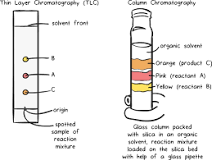What is the most popular fingerprint
Loops
What factors go into calculating an ecological footprint?
The Ecological Footprint measures the amount of biologically productive land and sea area an individual, a region, all of humanity, or a human activity that compete for biologically productive space.
What is chromatography?
Does water destroy fingerprints?
These surfaces can be wet by water from several sources. When checking specialist literature1 we found that ninhydrin and DFO were of no use in revealing latent fingerprints on wet surfaces because the amino acids left by the fingers are dissolved on contact with water.
How does an ecological footprint calculator work?
The Footprint measures a person's demand on ecosystems services: the amount of land and sea area needed to produce the goods they use and absorb their carbondioxide emissions. Many positive actions such as planting trees and recycling donot directly reduce the amount of area needed to support each person.
Which Type Of Gc Detector Is Most Commonly Used? Explain Its Working Principle And What Are Its Limitations?
The most commonly used detector is the flame ionize detector. The sample is combusted with the help of fuel gas and oxidant in the detector body. Combustible sample components burn and produce ions and electrons which can conduct electricity through the flame. A large potential difference is applied at the burner tip and the collector electrode located above the flame and the current between the electrodes is measured. The detector is mass sensitive and response is not affected by carrier gas flow rate changes. However, the detector is not responsive to inorganic gases such as CO, O2, NH3, N2, CS2, CO2, etc.
Fingerprint Records Frequently Asked Questions - OSPI
Two years from the clearance date we receive from the Federal Bureau of Investigation (FBI).
What does human footprint mean?
Ecological Footprint. The simplest way to define ecological footprint would be to call it the impact of human activities measured in terms of the area of biologically productive land and water required to produce the goods consumed and to assimilate the wastes generated.
What are the 4 types of chromatography?
There are four main types of chromatography. These are Liquid Chromatography, Gas Chromatography, Thin-Layer Chromatography and Paper Chromatography. Liquid Chromatography is used in the world to test water samples to look for pollution in lakes and rivers.
Can police get fingerprints off money?
Paper money may not only have fingerprints on it, but it can also have thousands of different types of bacteria living on it due to its porous nature. ... If you are too rough with the money, it can easily tear or become defaced which will cause it to no longer be legal tender.
What is built up land footprint?
Built-up land. The built-up land footprint is calculated based on the area of landcovered by human infrastructure including roads, carparks, houses and buildings, industrial structures and reservoirs for hydroelectric power generation. In 2008, thebuilt-up land area of the world was approximately 170 million hectares
What is chromatography in chemistry?
Chromatography is a versatile separation technique widely used to obtain pure compounds from mixtures. All chromatographic techniques depend on a stationary phase, usually a finely divided solid or coated solid, that a mobile phase, usually a gas or liquid, moves through
How long do fingerprints remain on a surface?
There is no scientific way to know how long a latent fingerprint will last. Fingerprints have been developed on surfaces that had not been touched in over forty years; yet not developed on a surface that was handled very recently. There are a multitude of factors that effect how long fingerprints last.
What is the relationship between ecological footprint and biocapacity?
These productivity weighted biologically productive hectares allow researchers to report both the biocapacity of the earth or a region and the demand on biocapacity (the Ecological Footprint). A global hectare is a biologically productive hectare with world average biological productivity for a given year.
Why is it called chromatography?
Mikhail Tsvet and Early Column Chromatography. In the 1890s, column fractionation was developed as a technique to separate out the different components of petroleum. ... As a result, he named the technique “chromatography”; “chroma” from the Greek word for “colour”, combined with “graphy”, meaning writing or recording.
